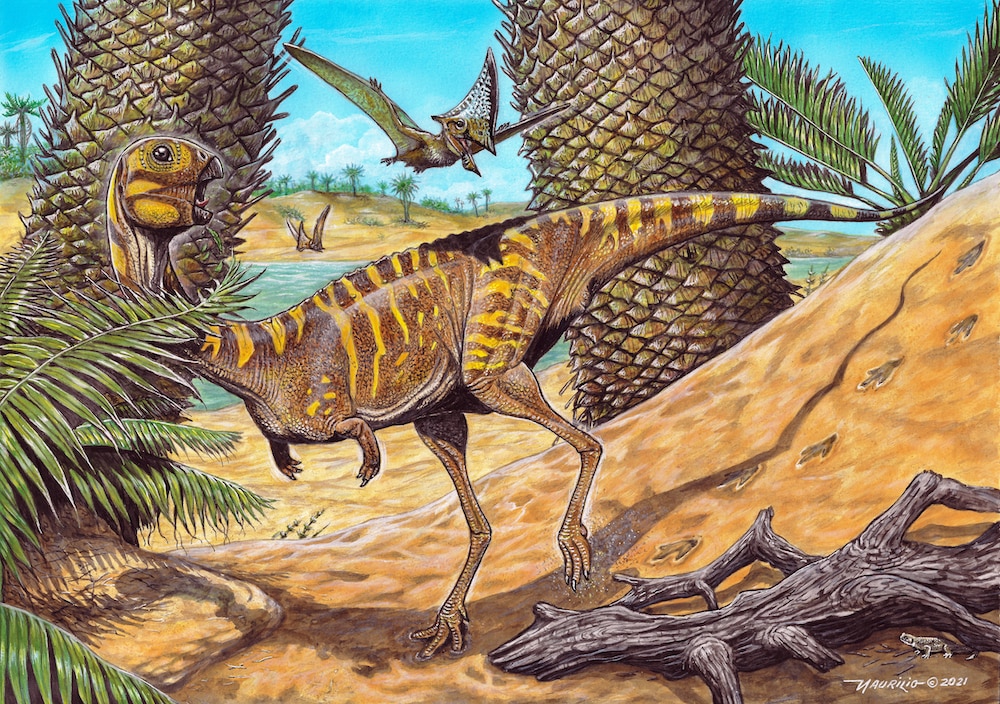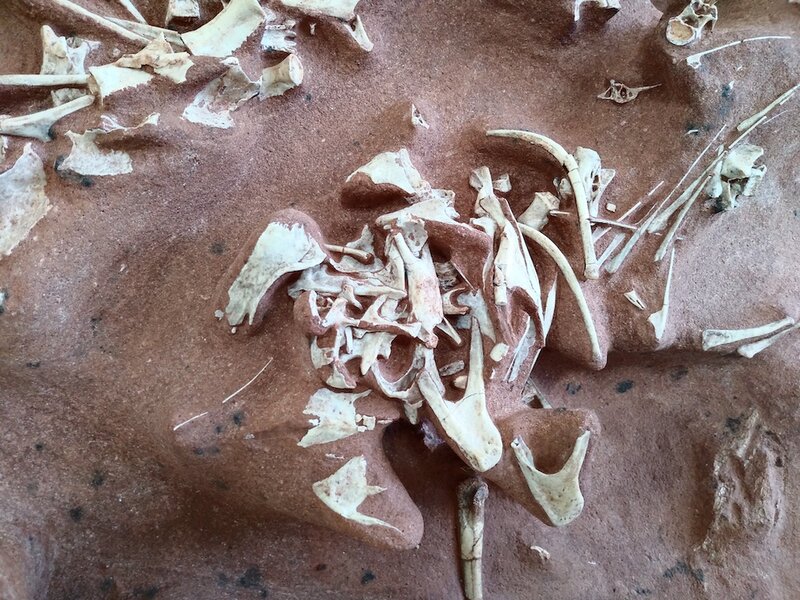Create a free profile to get unlimited access to exclusive videos, sweepstakes, and more!
Newly discovered dinosaur was first of its kind to live a totally toothless life
Teeth are so last epoch.

Every time we dig into the earth looking for bones, we peer into our own past. Every new fossil found tells us not just about that individual animal, or even that animal’s species, but about the story of life on our planet.
The nature of the fossil record — that so many of the plants and animals which have lived and died over the last few billion years should be lost to history — means that our knowledge is necessarily incomplete. But every new discovery adds a pixel to that every growing image.
A recent discovery from a fossil bed in Brazil now adds information which not only fills a gap in our knowledge but changes the way we understand the evolution of a subset of dinosaurs, and it all comes down to their teeth, or the lack thereof. Alexander Kellner from Laboratório de Sistemática e Tafonomia de Vertebrados Fósseis (LAPUG) in Brazil, and colleagues, described a previously unknown species of theropod dinosaur which is the first of its kind. Their findings were published in the journal Scientific Reports.
Dinosaurs can be broken up into a few main groups. Among them are sauropods which contain the large, long-necked herbivores of Land Before Time fame; ornithischians which contain many of the other well-known herbivorous dinosaurs like stegosaurus; and theropods. This last group contains many of your childhood favorites, nearly all of them carnivores, from T-rex and Velociraptor to Carnotaurus and Deinonychus. Basically, if it was sharp of tooth and ate other meat, it was probably a theropod. However, there seems always to be an outlier who breaks all the rules. Such is the case with Berthasaura leopoldinae, a recently discovered theropod from the Cemitério dos Pterossauros Quarry, in Brazil.
As is the way with evolution, even these large dinosaur groups can be broken down further. Some portion of theropods eventually evolved into modern birds, but not all of them. In essence, all birds are theropods, but not all theropods are birds or would even become them. Among the theropods who did not evolve into birds are ceratosaurs, which share many characteristics with their avian relatives but are nonetheless distinct. Berthasaurus, a relatively small meter-long dinosaur, is one of these.
“Theropods are the meat eaters. Big teeth, T-rex, that sort of thing,” Kellner told SYFY WIRE. “Part of this group led to birds and along the way they lost their teeth, but they are all evolutionarily close to birds. This guy is a more basal creature in the evolutionary history. Other theropods are part of the bird lineage, this is not. For a ceratosaur to be toothless is odd.”
There have been previously discovered ceratosaurs which lacked teeth, but in those cases, it was a development which happened later in life. In Limusaurus inextricabilis, for instance, newborns enter the world with teeth but lose them in adolescence. Their loss of teeth is developmental, but in Berthasaurus, it appears to be inborn.
“In Limusaurus inextricabilis you have young individuals that have teeth until essentially the bone covers the alveoli (dental sockets in which teeth are rooted) and closes. Knowing this, you may think Berthasaurus is an old animal who has lost teeth. But, not, it’s a young animal,” Kellner said. “We know that because of the lack of fusion of certain bones. The skull bones are unfused, the lower jaw bones are unfused. It’s indicative that it’s a young animal.”
Just to be sure, Kellner and team completed micro-CT scans on the lower jaw to confirm their findings. If there had been juvenile dental structures, they should have found remnants of alveoli structures in the bone to house those teeth, but that was not the case. Every indication was that this was a young animal, evolutionarily divergent from avian theropods, which lived its entire life without teeth.
“The question is why are theropods doing this so early on, and we don’t know the answer yet. It wasn’t expected,” Kellner said.
One possibility has to do with differentiation of resources. It’s possible that Berthasaurus existed within a niche entirely separate from other theropod dinosaurs in the Brazilian Cretaceous. While it’s larger relatives like Allosaurus were chomping on other dinosaurs, Berthasaurus was probably munching on salads.
“One thing we keep wondering is what this animal ate,” Kellner said. “It’s possible it was still eating meat, but if I had to bet, I’d say it’s more of an herbivorous creature. We can’t be totally sure so we say it was omnivorous, which would have been beneficial because it lived in an environment surrounded by desert, so food resources would be scarce.”
Berthasaurus’ jaw has an upper cutting edge while the lower jaw is bung with grooves on the side. Similar structures are seen in some birds and other animals. Since these more basal ceratosaurs are not thought to have evolved into birds, these structures provide evidence of convergent evolution. What works for one species can work for another.
“The process of gaining and loosing teeth is definitely more complex than we imagined,” Kellner said.
Maybe Berthasaurus simply saw where the trends were headed and wanted to get a jump on evolutionary changes, or maybe we still have a lot to learn about how animals succeeded in Earth’s deep history.

























